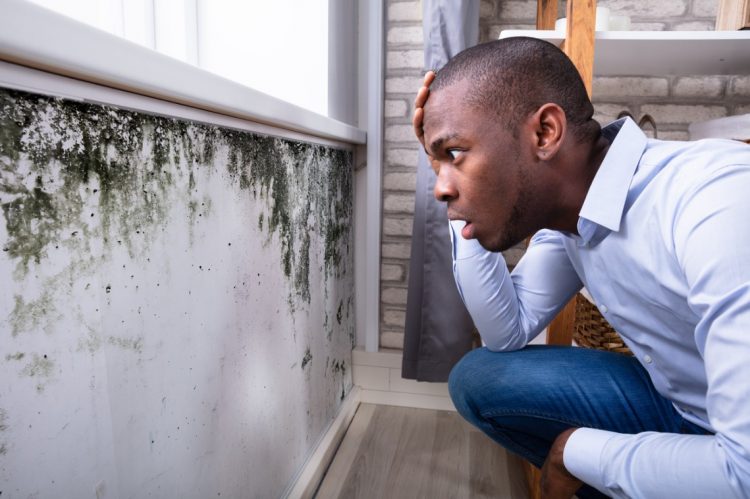Mold is a fungus that thrives in damp environments, often becoming a concern in homes. It produces spores that travel through the air and can settle on moist surfaces, leading to rapid growth. Mold’s presence in homes can pose significant health risks and cause structural damage, making it essential for homeowners and buyers to understand.
Attempting to sell a house with mold can be a significant mistake, as buyers see it as a severe downside. Based on my years of experience dealing with mold, I highly recommend having it remediated by a professional. Many potential homebuyers will back out of a sale if mold is discovered. Sometimes, they will not proceed even if a seller agrees to treat the issue.
For this reason, swiftly dealing with mold is a wise choice. When preparing to sell, I recommend looking carefully in your attic, basement and closets for any signs of mold.
Let’s examine everything you should know to make the best decisions.
What is mold?
The mold consists of various fungi that break down organic matter in nature. The most common household molds include Aspergillus, Cladosporium and Stachybotrys (also known as black mold). These fungi require moisture and organic material, like wood or drywall, to grow.
Mold spores are always in the air but only become problematic when they find ideal growth conditions. With warmth and moisture, mold colonies can quickly expand, releasing more spores into the environment.
Common causes of mold in homes
Home mold growth can result from various causes, often related to moisture problems. Here are the most common causes:
- Poor ventilation: Inadequate airflow can cause moisture to accumulate in kitchens, bathrooms and basements, fostering mold growth.
- Plumbing leaks: Leaky pipes behind walls or under sinks can provide the perfect environment for mold to thrive.
- Roof leaks: Water seeping in from a damaged roof can cause mold to grow on walls and ceilings.
- Flooding: After a flood, moisture can remain trapped in floors, walls and furniture, leading to mold issues.
- Condensation: Temperature differences between a home’s interior and exterior can cause condensation on surfaces, especially windows and walls.
- Damp basements: Poor drainage and inadequate waterproofing can make basements a hotbed for mold growth.
Why is mold a concern for homeowners and buyers?
- Health risks: Mold exposure can cause allergic reactions, asthma attacks and other respiratory issues, particularly for those with weakened immune systems. Symptoms include coughing, sneezing, skin irritation and, in severe cases, difficulty breathing.
- Structural damage: Mold can weaken wood structures, drywall and other building materials, compromising a home’s integrity. If left untreated, extensive mold growth may require costly repairs.
- Decreased property value: Whether selling a condo or a house, mold can have a detrimental impact. Homes with mold issues can suffer from decreased property values. Potential buyers are often wary of purchasing properties with a history of mold, due to the health and financial risks associated.
- Legal and insurance implications: Some jurisdictions have laws requiring sellers to disclose known mold issues to buyers. Additionally, insurance may not cover mold damage from long-term neglect or poor maintenance. It is a considerable home-selling mistake to leave it as-is.
Preventing mold in homes
Preventing mold in homes requires proactive steps to control moisture. Here are some strategies:
- Improve ventilation: Install exhaust fans in bathrooms and kitchens. Open windows regularly to improve airflow.
- Fix leaks promptly: Regularly inspect plumbing for leaks and repair them immediately. Check roofs and gutters for damage and ensure proper drainage.
- Use dehumidifiers: Dehumidifiers in damp areas, such as basements, to maintain humidity below 60%.
- Address flooding quickly: Dry affected areas as quickly as possible after a flood. Remove water-damaged materials to prevent mold growth.
- Insulate and ventilate: Properly insulate homes to reduce condensation on cold surfaces. Use proper ventilation to circulate air.
- Clean regularly: Clean bathrooms, kitchens and other damp areas frequently to reduce mold spores.
What to do if you find mold
If you find mold in your home, assess the extent of the problem. For small areas, like above a shower, you can clean mold with water, detergent and a disinfectant like bleach. Wear protective gear to avoid inhaling spores. For larger infestations, professional mold remediation may be necessary to remove the mold and address underlying issues.
If buying a home, consider mold inspections, especially in older properties or areas prone to humidity. This can reveal potential mold issues before purchase. I always suggest my clients inspect for it.
Conclusion
Understanding mold is crucial for homeowners and buyers alike. By knowing what mold is, its common causes and its potential impacts, you can better prevent and address mold issues. Mold can cause health problems, structural damage and financial concerns.
Proper ventilation, prompt repairs and regular cleaning can help keep your home mold-free. When mold issues arise, taking immediate action is critical to protect your health and property.












